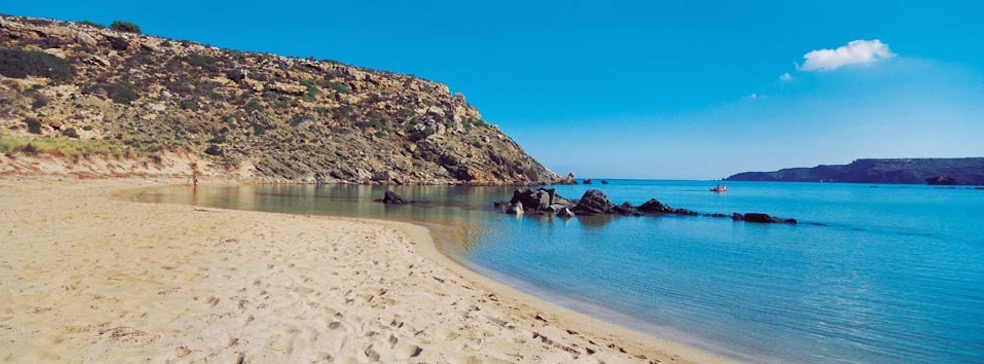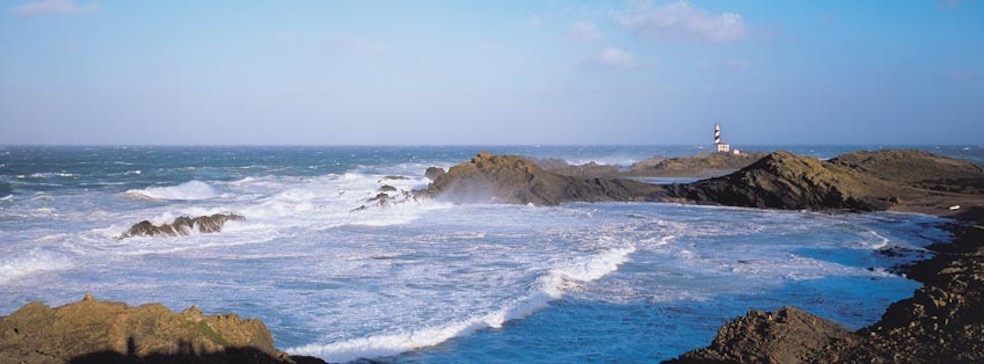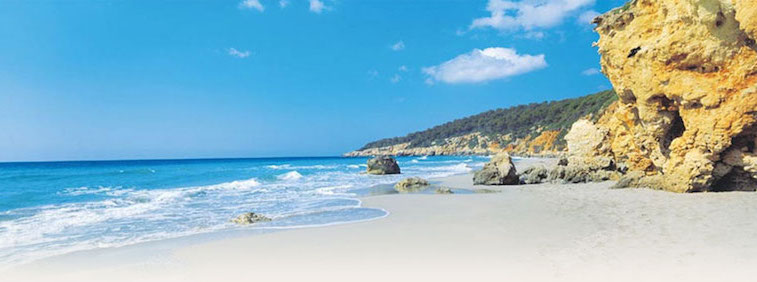MENORCA
-
Ciudadela de Menorca
- Cala Pilar
- Algaiarens
- Playa des Bots
- Cala Morell
- Cala en Forcat
- Cala en Blanes
- Cala des Frares
- Sa Caleta
- Cala Santandría
- Sa Caleta den Gorries
- Cala Blanca
- Cala en Bosc
- Son Xoriguer
- Son Saura
- Es Talaier
- Cala en Turqueta
- Macarelleta
- Macarella
-
Ferreries
- Cala Galdana
- Cala Mitjana
- Cala Trebalúger
- Ets Alocs
- Arenal d'en Castell
- Son Parc
- Arenal de Son Saura
- Arenal de Tirant
- Binimel·là
- Cala Pregonda
- Playa de Cavallería
Es Mercadal
-
Es Migjorn Gran
- Binigaus
- Cala Escorxada
- Cala Fustam
- Sant Tomás
- Son Bou
- Cala en Porter
Alaior
-
Mahón
- Cala Binidalí
- Cala es Murtar
- Cala Mesquida
- Playa des Grau
- Bnisafúller
- Playa de Binibeca
- Cala Torret
- Biniancolla
- Playa de Punta Prima
- Alcalfar
- Cala Pedrera
San Luis
Es Castell
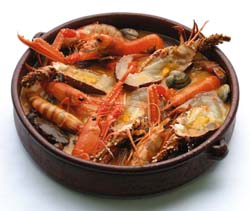
Lobster stew
Lobsters from the Balearic Islands are known for being the best, especially the highly prized ones caught between Mallorca and Menorca.
The delicious lobster is the queen of the Balearic Sea. It belongs to the European lobster species, scientifically known as Homarus Gammarus, and inhabits the rocky coast and feed on smaller animals such as squids, mussels, sea urchins. Lobsters may reach 50 cm long and have reddish or lilac shells with spikes for self-defense. They weight about 400 to 600 g and may be caught following traditional methods, with banquets used as traps on the seabed. These crustaceans are protected in the Balearic Islands, and capture is only permitted between 1st of March to 31st of August. During this period, only lobsters larger than 19 cm can be caught.
The lobster is the basis of the delicious caldereta, a stew that can be savored in most of the seafood restaurants on the coast. This is a stock that resembles the bullabesa. Many of the restaurants have their lobsters in large aquariums, allowing their clients to choose the preferred lobster for their dish. In order to know if a lobster is fresh, you should lift it by its antennae and check if it moves its tail with energy.

The lobster stew from Cala Fornells
A caldereta de langosta is recommended all around the Baleares coast, but there is a place that stands up from the rest: Fornells in northern Menorca. In this small and charming fishing village it is prepared the most famous lobster stew among gourmets, one of them being former King of Spain Don Juan Carlos, who even quoted this as his favourite dish. In his holidays in the Island he has more than once been in Fornells to enjoy this delicious dish on the few but special restaurants in this bay, some of them with terraces over the sea and with fantastic views.
Few things match a delicious dinner in such a romantic place in a place we would like to stay forever. Fornells matches all these with a supreme lobster stew in an idyllic setting.
Fornells is a place worth visiting. Apart from its lobster stew, the bay is famous among nature enthusiasts, surfers and sailors. From Fornells’ tower, built by the English in 1802 at the main entry to the bay, you can enjoy a unique panoramic view of open sea and cliffs. The view reaches Cap de Cavalleria, protected zone of special interest, where it is found the first open air museum in Menorca with archeological findings from several periods in history.
The history of Menorca is a story of successive invasions, which does not appear as a surprise considering the fact the island is found in comercial and strategic location to all empires that have fought for control of the Mediterranean.
Taules and talaiots that spread over the island date from a late era in prehistoric chronology, the bronze age, which developed in Menorca from the year 1600 BC until 200 BC. During the Talaiotic decline, Menorca was often visited by Phoenician and Greek traders and Greeks and was conquered by the Carthaginians, who founded the cities of Jamma (now Ciutadella) and Maghen (now Mahon). Among Carthaginian troops were enlisted the famous Balearic slingers, which were able to break shields and helmets with their projectiles.
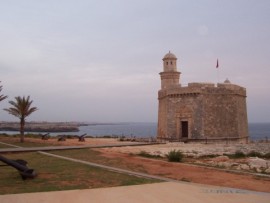
The romans, under command of Quinto Cecilio Metelo, conquered the Baleares in 123 AD, naming the Island Balearis Minor (or Menorca) to our island. It is from roman times the mosaic now found on Isla del Rey in Mahon´s harbor. Several bonze statues, objects of adornment, ceramic inscriptions and ceramic pieces are exposed in Museo Menorca, in Mahon.
From the Early Christian period, which lasts until the Arian Vandals take the island in the year 427, the basilica of Son Bou, Torello and the Es Cap d'es Port of Fornells still remain.
The occupation of the Arab island takes place at the beginning of the tenth century, but two centuries before the ships leaving the peninsula North Africa besieged the coast and temporarily some cities .. Four centuries of Muslim domination have left Menorca a deep imprint. Not only in the place names (Binibeca, Binisafulla, Alcaufar, Cala Galdana, and some others), but also the love of horses, archaeological sites like the Castle of Santa Agueda, and beautiful legends that they have been orally transmitted In 1287 Alfonso III conquered Menorca to the Crown of Aragon, exterminating the Muslim population to replace Catalan and Mallorcan settlers.

The most tragic events (after the bloody reconquest) of the history of Menorca are produced in the sixteenth century, with the sacking of Mahon (1535) by the Turkish pirate Barbarossa and moreover, the Ciutadella by Piali, pirate Turkey also in 1558. On July 9 of that year the assailants, after more than a week of siege, managed to breach the walls of Ciutadella. The slaughter and destruction of the city the document called "Act of Constantinople" are exposed in the museum. More than 3,500 people from Ciutadella were taken as slaves.
French and English are alternated in control of the island from the first British occupation in 1708 until the signing of the Treaty of Amiens in 1802, by which Britain returned Minorca to Spain. These dominations have left clear traces in architecture, language, and even the character of the Minorcan. Fort Marlborough in Es Castell, or the home of Lady Hamilton, mistress of Lord Nelson, are recommended visits, as well as the Fortess of the mole (Fortress of Isabel II) in the mouth of the port of Mahon.

 ESP
ESP
 ENG
ENG
